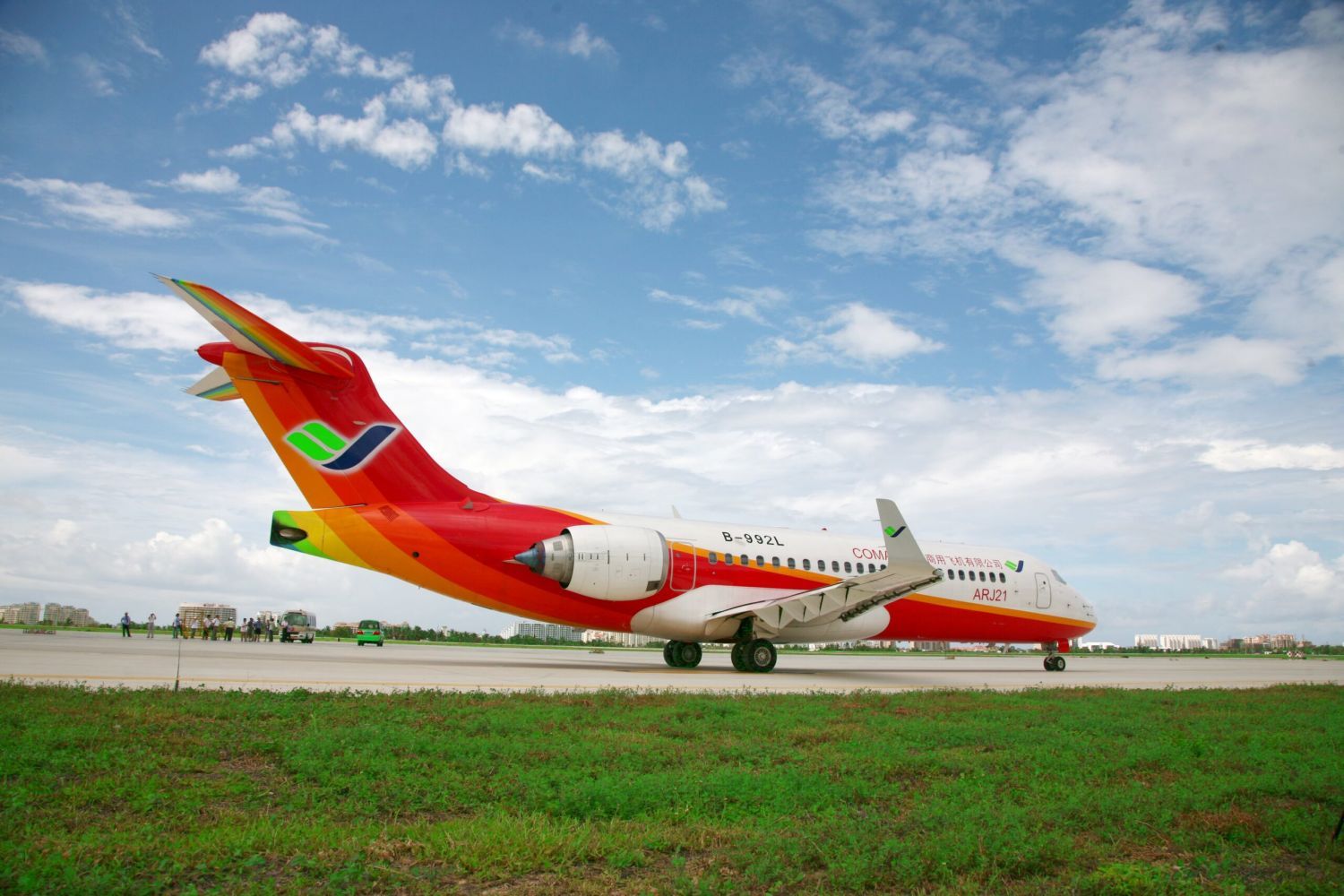Indonesia-based TransNusa is set to take delivery of the first ARJ21 from the Commercial Aircraft Corporation of China (COMAC), making it the first overseas operator of the model.
TransNusa is a small regional airline founded in 2005 that connected the eastern Indonesian community and was based in Kupang (KOE) in the southern province of East Nusa Tenggara. In September 2020, in the middle of a health crisis, the company decided to temporarily suspend operations due to the changing travel behavior. At that time it had to return its entire fleet to its lessors, consisting of six ATR 72s and one ATR 42.

In November 2021, after more than a year, it finally communicated through social media that it will rebrand to become a low-cost carrier, confirming that they have started the process of reapplying for the Air Operator Certificate (AOC) along with other preparations. China-based China Aircraft Leasing Group Holdings Limited (CALC) controls the airline with a 35.68% stake through Linkasia Airlines Group Limited (formerly known as Aviation Synergy Limited), while another percentage is held by Indonesian investors.
Since CALC joined TransNusa’s share capital, it has set out to reorient the airline’s operations and turn it into a low-cost carrier. Simultaneously, improving its corporate governance structure, clarifying historical issues (taxes, contracts, etc.), reorganizing its professionalism, its management, and operations team, and comprehensively improving its operational standardization. The operational safety culture in Indonesia is weak, being one of the countries with one of the highest incident and accident rates in the world.
CALC has committed to refloating the airline with 50 Airbus A320neo and thirty ARJ 21s with an option for another 30. The Chinese model, registration B-099Y (MSN 186), was spotted with the airline’s corporate livery during its test flights at COMAC’s Shanghai/Pudong (PVG) facility on December 20. TransNusa is scheduled to take delivery in January and the order is expected to be completed in phases before 2026.
https://twitter.com/incompressflow/status/1474149448112648201
This will be the first delivery of the ARJ-21 to an airline outside China. CALC plans to use TransNusa to promote the model overseas, given that so far the sixty-nine ARJ-21s that have been built are operated by Chinese airlines (Air China, Chengdu Airlines, China Express Airlines, China Southern Airlines, CFGAC, Genghis Khan Airlines, Jiangxi Airlines, OTT Airlines, and Urumqi Airlines).
TransNusa will make its first commercial operation in February, where it will also join its first Airbus A320neo, with registration PK-TLA, obtained from CALC’s order book. According to its website, the first destinations will be Kupang, Jakarta, Yogyakarta, Surabaya and Bali/Denpasar.
The long history of the COMAC ARJ 21
Following the failures of the Xian Ma-60, AVIC initiated the project in 2002 before becoming part of COMAC in 2009. The original plan was to enter commercial service in 2005 but this was delayed by eight years due to various design and production problems. The first prototype was unveiled in 2007 and flew for the first time on November 28, 2008.

El diseño del ARJ-21 es similar al mítico MD-80 o DC-9, pero COMAC ha enfatizado que se trata de un producto original con tecnología nativa. EL ARJ 21-700 recibió su certificado de tipo por parte de la Administración de Aviación Civil de China (CAAC) el 30 de diciembre de 2014 tras un programa de más de 5.000 horas de vuelo.
En noviembre de 2015 Chengdu Airlines recibió la primera aeronave y recién en junio de 2016 se realizó el primer vuelo comercial del Comac.
En 2017, la CAAC certificó la producción en masa del ARJ 21, permitiendo que en las instalación de COMAC del Aeropuerto Internacional de Pudong, Shanghái, se puedan fabricar 30 aeronaves por año.

The ARJ 21-700 has 30a 90-seat configuration and a range of up to 3,700 kilometers. They recently launched an executive version to carry between 12 and 29 passengers for operations up to 5,500 kilometers. Additionally, they proposed to have a cargo model and are considering launching a modernized version called ARJ 21-900, with a reduction in weight and endurance for hot & high operations.

The Chinese airlines, encouraged by the government, have given value to the model, allowing it to expand the offer of regional flights and replacing the Bombardier CRJ and Embraer. China is eager to demonstrate the quality and viability of its aeronautical products in the Indonesian market, after the poor performance of the Xian Ma-60.


Comentarios
Para comentar, debés estar registrado
Por favor, iniciá sesión